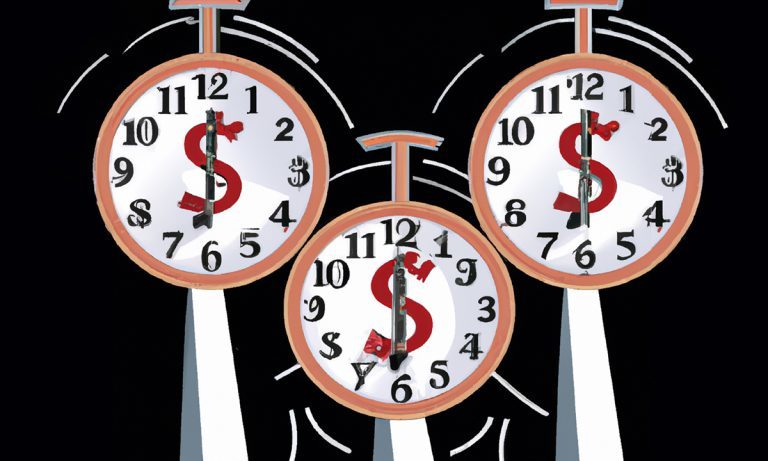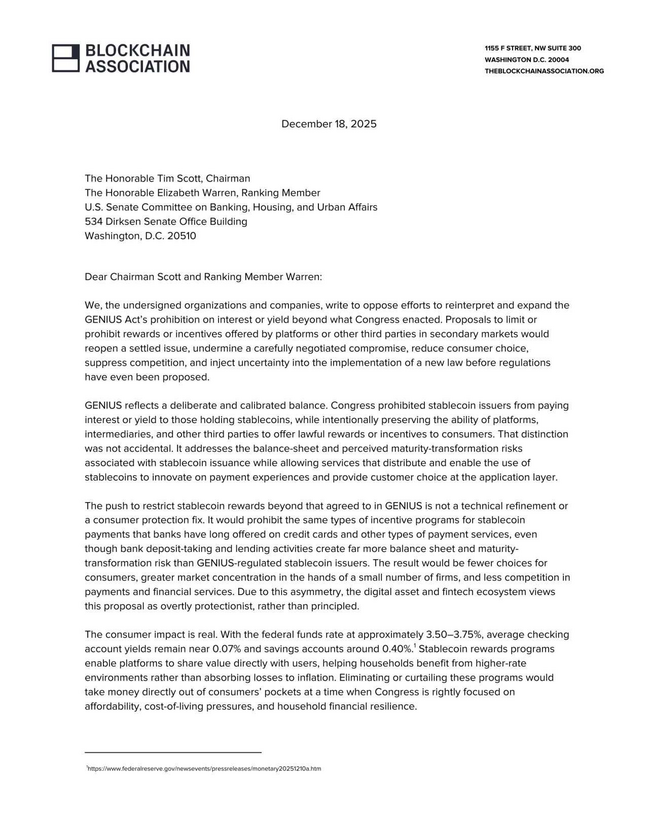Four days from today, the Federal Reserve’s instant account-to-account payments rail will go live. FedNow’s launch on July 20 will bring the number of real-time rails in the U.S. to two. The first real-time rail to go live was RTP®, operated by The Clearing House, in 2017.
Judging by the barrage of press releases and PR pitches received by PYMNTS over the last several weeks, the launch of FedNow is to payments what the Red Sox winning the World Series in 2004 after an 86 year drought was to baseball: an historic milestone that was a long time in coming.
| So, it seems, the race for instant payments in the U.S. is on. |
In many ways, July 20 begins the countdown to ubiquitous instant account-to-account payments in the U.S. TCH with RTP® has been live for six years and counts 274 financial institutions and 65% of U.S. deposits connected to its rail as important milestones of its own. But as even TCH and its member banks will admit, traction around use cases has been scattered, the number of transactions low. TCH with RTP® hasn’t yet achieved the critical mass needed to ignite its payments platform. The introduction of FedNow creates competition for RTP® volume and potentially the real-time payments infrastructure for new use cases like merchant payments.
In addition to the U.S. Treasury, FedNow says that 56 “Early Adopters” are certified and ready to move money over its rails at launch. The profile of those early adopters leans heavily to small FIs — 41 of the 56 are FIs, many with profiles like 1st National Bank of Yuma, Buffalo Federal Bank and Consumers Cooperative Credit Union with assets of $550M, $174M and $2.8B respectively — even though four TCH founding members, J.P. Morgan, Wells Fargo, US Bank and BNY Mellon, are also ready to roll on Thursday. There are fifteen technology providers like Adyen, Fiserv, FIS, Jack Henry, Finastra and ACI that banks and FinTechs can use to connect to the FedNow rails.
So, it seems, the race for instant payments in the U.S. is on.
Like any good competitive rivalry stimulated by a new entrant, the watercooler talk now is about how long it will take for either or both networks to reach the point where they support a large volume of transactions and use cases to drive those transactions and ignite real-time account-to-account payments in the U.S.
Knowing that answer — or even how to guess — will depend on the clock you’re using to time the race.
The Triple Clock Theory
Humans have been measuring time for more than five thousand years. It was 1500 BC when the Egyptians invented sundials and water clocks to, among other things, track the blocks of time between sunrise and sunset to better schedule the arrivals and departures of ships bringing goods into the country.
It was the Sumerians who created the base 60 numerical system in the 3rd millennium BC which would become the basis for timekeeping today: Hours were comprised of 60-minute intervals and minutes of 60 second intervals. Mechanical clocks that followed in the mid-to-late 1200s were perfected over the subsequent three hundred years, making it possible for time to be measured systemically and consistently with precision everywhere in the world.
We measure time because there is a finite amount of it — in a day, in a week and over a lifetime. People use time as an organizing construct to manage their daily lives. Athletes count time because they want to beat their personal records. The amount of time that it takes for big things to happen makes news: whether it is how long it takes to capture escaped convicts or how long it might take for inflation to hit the Fed’s 2% target. People want to make the most of their time because it is the most precious asset they have. Wasting it is low on everyone’s list.
Counting time in the business world is how economists and business leaders measure productivity: the minutes, hours and days needed to complete a task, and the number of people required to deliver the expected outcome. Like people, businesses want to optimize how their workforce’s time is spent and are loathe to waste it, even though by some accounts we all waste 24 billion hours a year in unproductive meetings. At least we did until people could multitask under the table with mobile phones or when their cameras are off during Zoom calls.
But it turns out that businesses, themselves, have their own internal clocks — a measure of keeping time often set by how long they’ve been in the market, the maturity of the markets in which they operate, the number of competitors vying for market share and the tech they use to power, manage and measure their business performance. These internal clocks set the pace for how decisions are made and how effective businesses are in creating a market advantage by continually innovating the products and services that their customers value and want to use.
| The Triple Clock Theory analysis helps companies anticipate relevant market dynamics to reset their internal clocks. |
The Triple Clock Theory (TCT) is an original framework that my consulting colleagues and I have devised to help businesses understand the pace of their internal clocks so that they can better assess whether their clocks could be cleaned by rivals seen and unseen — pardon the pun. But more importantly, the TCT analysis uses data-driven analysis to help companies anticipate relevant market dynamics to reset their internal clocks to prevent that from happening.
TCT posits that an incumbent business clock operates at a slower speed than a new entrant clock when introducing a product or service into the same competitive market. The rationale is as obvious as it is simple: Incumbents have created the market, acquired customers, created barriers to entry and have the assets — and a running head start — to sustain and grow their lead. Once a big incumbent machine gets its gears in motion, its momentum carries it forward, at least in theory. Incumbents assume that their clocks don’t have to move as fast because they have a big lead — until, of course, they see faster-paced competitors nipping at their heels.
As newbies, challengers’ clocks must move rapidly because they face a different reality: They lack clients, market position and the deep pockets to lollygag around. New entrants typically use different tools to help their clocks operate at a faster speed and shape their competitive advantage. Those tools could be anything from a new business model, pricing framework, data or payments capabilities, or user experience. Sometimes powerful new entrants bring all of that wrapped around better and more agile tech that makes switching easy and eliminates friction that still exists in how business is done in that market. They are also leaner so they can move fast.
Then there is the third clock, the technology clock, which is one of the sources of market disruption or competitive opportunity for both incumbents and new entrants. The technology clock can either speed up or slow down their respective internal clocks. New, breakthrough tech can create a better, faster and cheaper way to deliver the same product or service — or spawn new challengers that use it to leapfrog existing players. Predicting who will gain the most from the influence of the technology clock on their business is not always obvious since the technology clock does not always advantage new entrants.
Generative AI and LLMs are the most recent example of this third technology clock, but there have been others over the years. Most interesting about the Gen AI clock is its ability to not only change the pace of business, but the fundamental ways in which business is done.
In a matter of a few short months, the intellectual value of its potential has been internalized by every business worldwide. Open-source models are eliminating the barriers to entry that often come along with accessing and integrating powerful tech into business.
Both are fast-tracking Gen AI’s own path to critical mass and ubiquity.
Watching the Real-Time Payments Clock
In 2017, it was the real-time payments technology clock that set out to disrupt how money moved between bank accounts in the U.S. and the rails that, until then, cleared and settled those transactions.
Fundamentally changing the speed for clearing and settling payments was the promise of the first new U.S. payments rail in 40 years, RTP®. The press release announcing the launch described the participation of its then twenty-five owner banks, the biggest of the big in the U.S., along with their expectations of introducing a host of new scenarios using real-time payments and new markets that would see it as a differentiating value proposition for their own products and services.
The stated goal then was to reach ubiquity by 2020 — meaning that every financial institution in the U.S. would be connected to RTP® rails and use it to innovate client-facing payments in those three years post-launch.
| The internal clocks at both the Fed and TCH will run a lot faster now that there’s competition for real-time payments transactions. |
Six years later, the U.S. remains a long way from ubiquity and adoption of account-to-account real-time payments even though 11 times more banks are members of the RTP® network today than at launch and nearly two-thirds of U.S. bank deposits are connected to it. Being connected means that those banks can move transactions over it — if they develop use cases around it and promote them.
Of course, adoption and use go together to a degree. It is hard to get substantial transaction use without widespread network adoption. But ubiquitous adoption doesn’t guarantee widespread transaction use, which requires use cases that banks market and customers buy.
Now, most people in and around the payments ecosystem say that the introduction of FedNow will move the U.S. more quickly to that real-time payments ubiquity. The CFPB’s desire to accelerate open banking in the U.S. will create more demand for real-time account-to-account payments and move more banks to connect to a real-time network. Merchants, who for decades have tried to find alternatives to card rails for accepting payments, may view FedNow as that alternative.
All of those dynamics will likely quicken the pace of the internal clocks at both the Fed and TCH now that there’s competition for real-time payments transactions. I don’t think its market entry necessarily gives FedNow an edge.
The FedNow Real-Time Payments Clock
In many ways, it makes the march of both rails to ignition — which requires ubiquitous adoptions and widespread use for transactions — more challenging.
For FedNow to scale, early adopters will have to see success — and see it quickly.
Igniting a new payments network requires volume and scale — and how quickly that happens is vital. Having early adopters connect is one thing, but having them transact is another, as the TCH experience shows. If that takes too long for whatever the reason, early adopters will lose interest — and the traction necessary to create the network effects that drive scale will slow. They will likely shift to other real-time payments alternatives.
The less obvious part of the FedNow challenge is the current lack of interoperability between FedNow and RTP®. Unlike the two ACH networks that are also operated by TCH and the Fed, there is currently no ability for a bank to originate a real-time payment on one rail and a bank not connected to that same rail to receive it. Also notable at the FedNow launch are the number of big banks that aren’t connected, at least not yet, but are part of the TCH RTP® scheme — including Bank of America, Citi, and PNC.
In the absence of interoperability, achieving real-time payments ubiquity in the U.S. will require that every bank in the U.S. — all 10,000 of them — be connected to both TCH and FedNow rails. Persuading banks to do that will require the availability of use cases that are compelling enough for consumers and corporates to integrate and support. That seems ambitious and even improbable, particularly since most banks haven’t adopted either network.
| Achieving real-time payments ubiquity in the U.S. will require that every bank in the U.S. — all 10,000 of them — be connected to both TCH and FedNow rails. |
More likely is that the big banks and technology partners connected to both will create that missing ubiquity by becoming the real-time payments orchestration layer for banks and other third parties. The decision they then face is how to route transactions.
Since pricing over the network is identical, those decisions will hinge on transaction limits, fraud and security protections, acceptance and the preference of their partners, whose real-time payments use cases today may already be satisfied by existing RTP® rails.
It will also rest with which rail can support important future use cases like Request for Payment, given its potential to ignite mainstream real-time payments use by consumers for bill pay — and in a timeframe that is relevant for end users. The consumer protections required of that use case remain a work in progress for FedNow.
That’s not to say that TCH and RTP® have a cake walk to critical mass and ubiquity, either.
The RTP® Real-Time Payments Clock
The lack of an effective RTP® ignition strategy at launch is why connectivity to two-thirds of bank deposits hasn’t turned into 100% connectivity, more transaction volume, and a more powerful set of use cases at scale. RTP®’s biggest competitor today isn’t FedNow, but Same-Day ACH and wires, both of which have ubiquity and deliver a faster payments outcome that banks know how to monetize. Push to debit transactions over card rails support instant payouts for B2C use cases like insurance claims and gaming payouts and check the instant payments box for those use cases using money mobility rails — and on a global scale.
| TCH with RTP® and the Fed with FedNow may both think they can operate on a slow clock. |
There’s also inertia on the part of corporates who haven’t yet invested in real-time payments integration because they aren’t sure that every bank account they want to send money can receive a real-time payment. Until they move their ERPs to the cloud, their batch-based ERP systems don’t allow them to post payments in real time either, muting their sense of urgency.
Larger corporates see its potential in solving for the nuisance “edge case payments” that are today mostly sent the old-fashioned way with checks but need the ubiquity problem solved first. Banks, corporates and FinTechs could decide that the workaround for the instant ubiquity challenge is to offer choice — RTP® or FedNow will become one of several options, but not the only way to clear and settle good funds instantly.
Watching the Clock and Getting to Critical Mass
The FedNow launch on Thursday makes the U.S. unique in the world to have both a central bank and private sector instant account-to-account payments rails. The rationale for the introduction of FedNow was to create a redundant set of rails so FIs have a choice, much as they do when processing ACH transactions today.
In some ways, TCH with RTP® and the Fed with FedNow may both think they can operate on a slower clock –and for different reasons. They are owned and run by large incumbents with staying power and money. They have important relationships that they can leverage to drive volume and scale. But unless one of them can get to ubiquity quickly and banks develop and market use cases to move large volumes of transactions over these rails, both could stall.
That’s where the technology clock comes in — as well as the fast clock for smaller and more nimble rivals who may use technology to create something better, faster and cheaper.
As they say, only time will tell.































